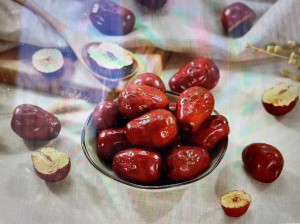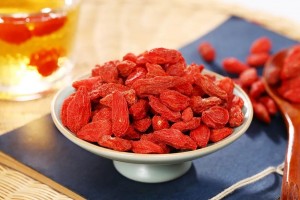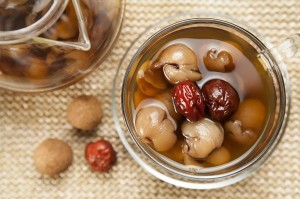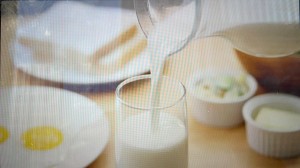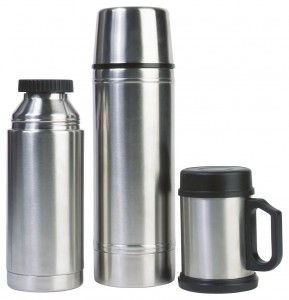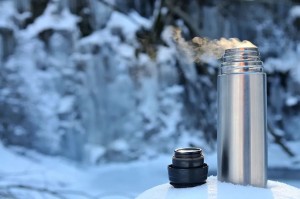After the beginning of winter, the temperature “falls off a cliff”, and the thermos cup has become the standard equipment for many people, but friends who like to drink like this should pay attention, because if you are not careful
The thermos cup in your hand may turn into a “bomb”!
the case
In August 2020, a girl in Fuzhou soaked red dates in a thermos cup but forgot to drink it. Ten days later, an “explosion” occurred when she unscrewed the thermos cup.
In January 2021, Ms. Yang from Mianyang, Sichuan was preparing to eat when the thermos cup soaked with goji berries on the table suddenly exploded, blowing a hole in the ceiling…
Soak red dates and goji berries in a thermos, why does it explode?
1. Explosion of thermos cup: it is mostly caused by microorganisms
In fact, the explosion occurred when the thermos cup soaked red dates and wolfberries, which was caused by excessive microbial fermentation and gas production.
There are many hygienic blind spots in our thermos cups. For example, there may be a lot of bacteria hidden in the liner and the gaps in the bottle caps. Dried fruits such as red dates and wolfberries are more nutritious. used by microorganisms.
Therefore, in an environment with suitable temperature and sufficient nutrients, these microorganisms will ferment and produce a large amount of carbon dioxide and other gases. It may cause hot water to gush out and cause an “explosion” to hurt people.
2. In addition to red dates and wolfberries, these foods also have the risk of explosion
After the above analysis, we can know that the food that is rich in nutrients and suitable for microbial reproduction is an important factor that causes the explosion if it is placed in the thermos cup for a long time. Therefore, in addition to red dates and wolfberry, longan, white fungus, fruit juice, milk tea and other high-sugar and high-nutrition foods, it is best to drink them immediately instead of keeping them in a thermos for a long time.
【Tips】
1. When using a cup with good airtightness such as a thermos cup, it is best to preheat it with hot water first and then pour it out before adding hot watIn addition, when drugs such as effervescent tablets come into contact with water, they will release a large amount of carbon dioxide quickly, and carbonated drinks themselves contain a lot of gas. This kind of food will cause the air pressure in the cup to increase. If it is shaken, it may cause the cup to burst, so it is best not to use a thermos cup for brewing or storage.
er, so as to avoid excessive temperature difference, which will cause a sudden increase in air pressure and cause hot water to “spout”.
2. No matter what kind of hot drink is brewed in the thermos cup, it should not be left for a long time. It is best not to unscrew the cup cover all at once before drinking. You can release the gas by carefully opening and closing the cup cover repeatedly, and when opening the cup, do not face people. Prevent injury.
It’s best not to put these drinks in a thermos.
1. Making tea in a thermos cup: loss of nutrients
Tea contains nutrients such as tea polyphenols, tea polysaccharides, and caffeine, which have strong health care effects. When hot water is used to make tea in a teapot or an ordinary glass, the active substances and flavor substances in the tea will dissolve quickly, making the tea fragrant and sweet.
However, if you use a thermos cup to make tea, it is equivalent to continuously decocting tea leaves with high-temperature water, which will destroy the active substances and aromatic substances in the tea leaves due to overheating, resulting in nutrient loss, thick tea soup, dark color, and bitter taste.
2. Milk and soy milk in a thermos cup: easy to go rancid
High-protein drinks such as milk and soy milk are best stored in a sterilized or low-temperature environment. If it is placed in a thermos cup for a long time after heating, the microorganisms in it will easily multiply, causing milk and soy milk to become rancid, and even produce flocs. After drinking, it is easy to cause abdominal pain, diarrhea and other gastrointestinal symptoms.
In addition, milk contains acidic substances such as lactose, amino acids, and fatty acids. If it is stored in a thermos cup for a long time, it may chemically react with the inner wall of the thermos cup and cause some alloying elements to dissolve.
Suggestion: Try not to use a thermos cup to hold hot milk, soy milk and other drinks, and don’t leave them for too long, preferably within 3 hours.
201 stainless steel: It is an industrial grade stainless steel with poor corrosion resistance and cannot withstand acidic solutions at all. Even in water, rust spots will appear, so it is not recommended to buy.
304 stainless steel: It is a recognized food-grade stainless steel with good processing performance and corrosion resistance. Generally, there will be marks of SUS304, S304XX, 304, 18/8, 18-8 on the bottle mouth or liner.
316 stainless steel: it is medical grade stainless steel, its corrosion resistance is better than that of 304 stainless steel, but its price is a bit higher. Generally, there will be US316, S316XX and other marks on the bottle mouth or liner.
2. Touch the bottom: look at the thermal insulation performance
Fill the thermos cup with boiling water and tighten the lid. After about 2 to 3 minutes, touch the outer surface of the cup body with your hands. If you find a warm feeling, it means that the thermos cup has lost its vacuum layer and the insulation effect of the inner tank is not good. good.
3. Upside down: look at the tightness
Fill the thermos cup with boiling water, screw the lid tightly, and then turn it upside down for five minutes. If the thermos cup leaks, it indicates that its seal is not good.
Post time: Jan-05-2023

